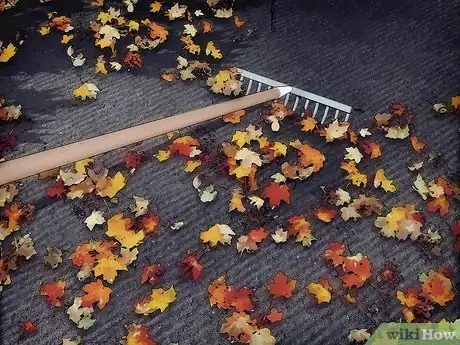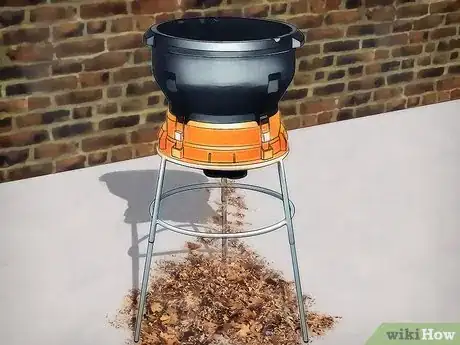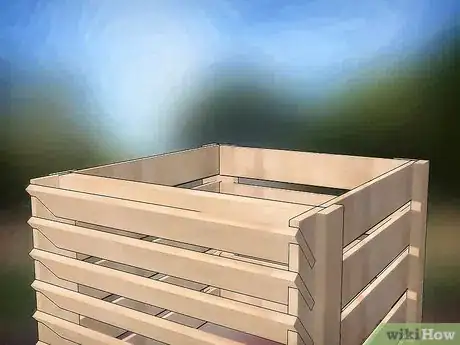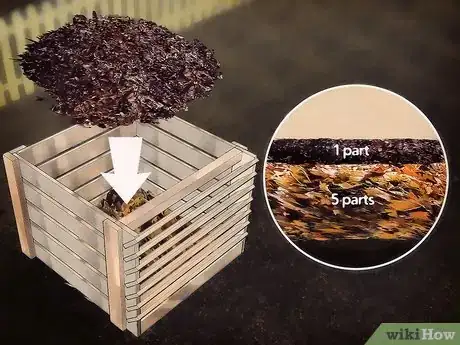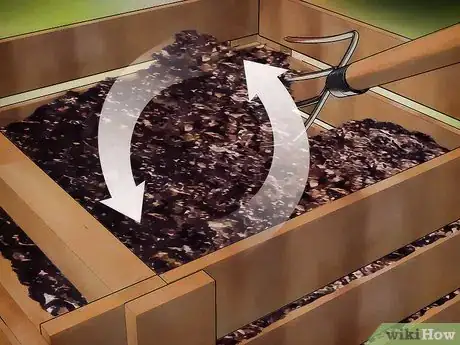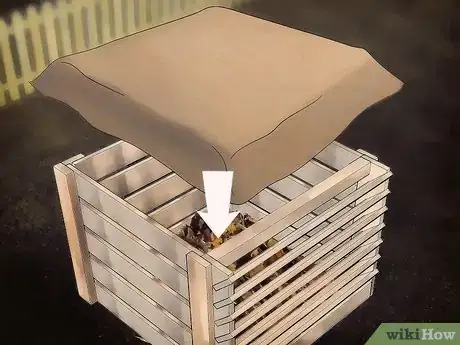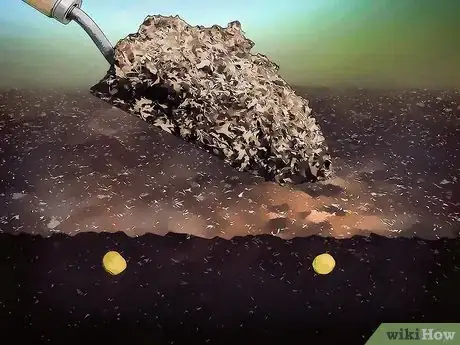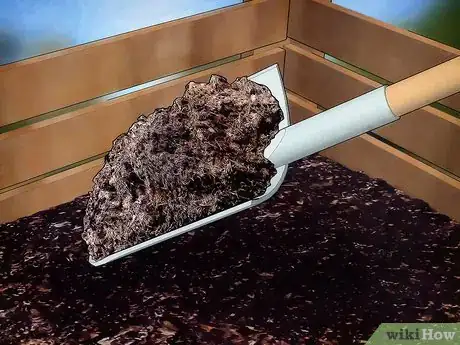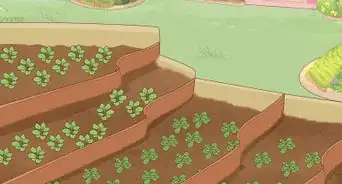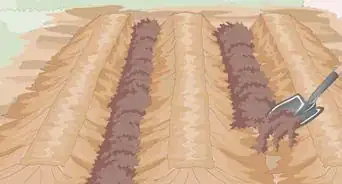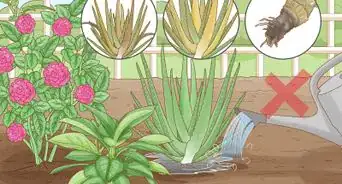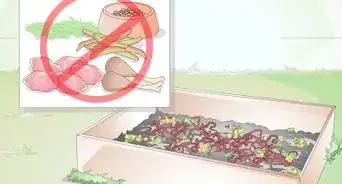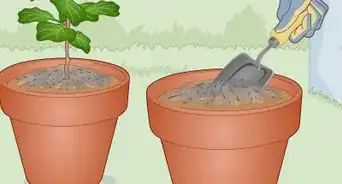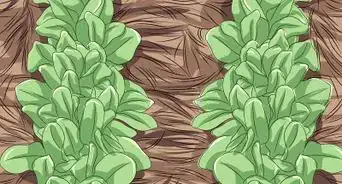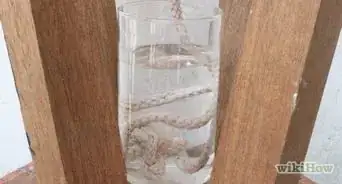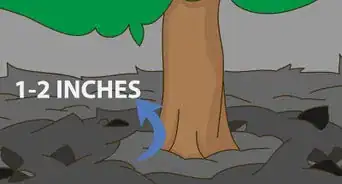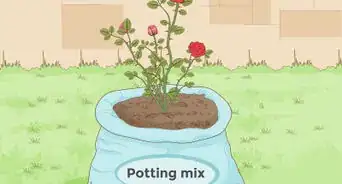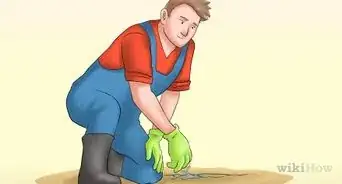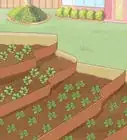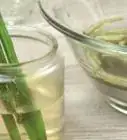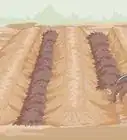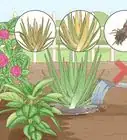X
This article was co-authored by Lauren Kurtz. Lauren Kurtz is a Naturalist and Horticultural Specialist. Lauren has worked for Aurora, Colorado managing the Water-Wise Garden at Aurora Municipal Center for the Water Conservation Department. She earned a BA in Environmental and Sustainability Studies from Western Michigan University in 2014.
This article has been viewed 20,856 times.
You don't need to let dead leaves go to waste in the fall. You can harvest dead leaves and use them as mulch. You will have to gather and shred the leaves and then prepare a compost heap. By mixing the leaves with a few ingredients, you'll have mulch for spring. You can use mulch to fertilize your soil and add to a compost bin.
Steps
Method 1
Method 1 of 3:
Raking up Fallen Leaves
-
1Get your leaves in a pile. To start, rake up the leaves in your yard. You want to gather all the leaves together so you can prepare to turn them into mulch.
- If you have a smaller yard, you may only need one big pile of leaves.
- If you have a bigger yard, you may have to make a series of piles to rake up all the leaves.
-
2Shred your leaves. To make mulch, you will need to shred your leaves. There are many different ways you can do this.
- If you have a leaf shredder or wood chopper, try feeding your leaves through this machine.
- If you don't have one of these machines, you can run a lawn mower over your leaves to shred them. You will have to thin your piles out a little so the lawnmower can run over them.
Advertisement -
3Prepare a compost bin. You need a compost bin for the process of turning leaves into mulch. If you already have a compost bin, you can use that. If you don't, you will need to prepare one.
- You can purchase a compost bin at a local hardware store. It's important the bin be at least 3 by 3 feet.
- You will probably end up with several 12 to 18 inch layers of leaves, so make sure the compost bin you select can accommodate this.
Advertisement
Method 2
Method 2 of 3:
Composting Leaves into Mulch
-
1Start with a six inch pile of leaves. You will need to create several layers when turning leaves into mulch. To start, you should spread out a pile of leaves on the bottom of your compost bin. Keep the pile about six inches high.[1]
-
2Add a material with a higher nitrogen level. You need materials high in nitrogen to help break down the leaves and create mulch. Manure is generally the best material you can use here. If you don't have manure, you can also use cottonseed meal, bone meal, or Agrinite. You can purchase many of these items at a local hardware store.[2]
- It's best to have a five to one ratio. There should be five parts leaves and one part of your nitrogen material.
-
3Add water. Getting the leaves a little wet with help them turn into mulch. There is no precise amount of water to add. It depends on how much leaves you're working with. Add enough water that the leaves are damp but not saturated with moisture.
-
4Turn the leaves frequently. Once the leaves and nitrogen are mixed, it's up to you to help them turn into mulch. You will have to take a rake or similar tool and turn the leaves over every three days. This will help them begin to break down and turn into mulch.[3]
-
5Cover the heap with a plastic sheet. Keep your leaves covered with a plastic sheet or tarp. This will keep your leaves warm. It will also prevent weather from drying the leaves out or getting them wet.[4]
Advertisement
Method 3
Method 3 of 3:
Using Leaf Mulch
-
1Add mulch to your garden. Mulch can be used in your garden. You can place them over seeds and plants for fertilizer and protection.
- A six inch blanket of leaves can help protect plants over the winter from strong winds.[5]
-
2Put the mulch in a compost pile. If you have an existing compost pile, separate from the one you used to turn your leaves to mulch, you can add your mulch to this. The high nitrogen compost of mulch created with leaves can easily help break down organic material in a compost pile.[6]
-
3Fertilize your soil. Mulch can be used as a fertilizer in the spring. You can add a layer of mulch where you're planting new flowers and plants. This may help them grow faster.[7]
Advertisement
References
- ↑ http://compostguide.com/using-leaves-for-composting/
- ↑ http://compostguide.com/using-leaves-for-composting/
- ↑ http://compostguide.com/using-leaves-for-composting/
- ↑ http://compostguide.com/using-leaves-for-composting/
- ↑ http://www.gardeners.com/how-to/put-fall-leaves-to-work/5402.html
- ↑ http://www.gardeners.com/how-to/put-fall-leaves-to-work/5402.html
- ↑ http://www.hortmag.com/weekly-tips/tools-materials/a-warning-when-using-fallen-leaves-as-mulch
About This Article
Advertisement
